Beyond Tripods: Camera Support Systems for Wildlife Photography
In wildlife photography, a dependable tripod is essential but it’s not the only tool worth carrying. Whether you’re exploring national parks, trekking through dense brush, or photographing wildlife at ground level, camera support systems for wildlife photography can make all the difference. In this guide, we’ll cover smart alternatives to traditional tripods and suggest gear that helps you stay steady and ready in the wild.
Monopods: Fast, Flexible, and Field-Ready
If you’re tracking fast-moving wildlife, a monopod is your next best friend to the tripod. It gives you just enough stability while allowing for quick repositioning – ideal for birds in flight or animals on the move. It gives you just enough stability without chaining you to one spot. Shake less, shoot longer, and grab sharper frames even when the light dips low. Big lenses? No problem. A monopod lets you handle serious glass without killing your arms. Whether it’s a bird launching into flight or an animal sprinting through brush, a monopod helps keep you in the chase.
Mobility Matters
Monopods shine when covering distance, navigating tough terrain and adapting to fast-paced environments.
- Lightweight: Easy to carry on long hikes.
- Quick setup: Ready for sudden wildlife encounters.
- Maneuverable: Swiftly follow moving subjects.
- Bird photography: Excellent for flight shots.
- Action scenes: Great for running animals.
- Crowded areas: Less intrusive than tripods.
- Quick transitions: Change positions fast.
Monopods vs. Tripods
For larger animals like bears or deer, consider your setup:
Tripods
- Best for long, fixed shoots.
- Heavy lenses (400mm+) are better stabilized on tripods but work well with monopods for more mobility.
- Tripods: Pricier but offer greater stability and versatility.
Monopods
- Monopods: Best for fast, unexpected encounters.
- Light lenses (under 300mm) are easier to manage handheld or with a monopod.
- Monopods: Affordable and easy to learn.
- Lightweight and compact
- Quick to deploy
- Great for action or uneven terrain
Hybrid Approach
Many photographers carry both a monopod and a tripod. Use a monopod for action and increased mobility, keeping in mind that it is less stable a tripod and requires faster shutter speeds. Opt for a tripod during planned stationary shoots stability.
Recommended Monopods
Gitzo GM4552L Series 4 Monopod
The Gitzo GM4552L Series 4 Monopod is the perfect camera support for wildlife photographers who need strength, stability, and height. With its 5-section carbon fiber design, it supports up to 77.2 lbs yet weighs only 1.6 lbs, making it lightweight and durable for outdoor adventures.
Reaching a maximum height of 74.8 inches, this monopod lets you shoot over crowds or from elevated positions with ease. If extra height or articulation is needed, you can add an optional head via the reversible 1/4″-20 and 3/8″-16 mounting thread. When collapsed, the monopod shrinks to just 22 inches for easy transport in the field.
Crafted from 6X Carbon eXact tubing, the monopod maintains maximum strength with minimal weight. The 6-layer carbon weave ensures durability, while the G-Lock Ultra twist locks protect against dust, dirt, and moisture.
At the base, a pivoting rubber foot with a ball-joint allows smooth tilts and adjustments, ideal for shifting angles during a wildlife shoot. You can swap the foot for optional rubber feet or a metal spike. Additionally, the ergonomic textured hand grip and removable wrist strap enhance comfort and security in the field.
Key Features:
- 6X Carbon eXact Tubing: Lightweight, strong carbon fiber perfect for long outdoor shoots
- G-Lock Ultra Twist Locks: Secure, dust-resistant locking system for reliability in all conditions
- Portable Design: Collapses to 22″ and weighs just 1.6 lbs for easy transport
- Pivoting Rubber Foot: Smooth ball-joint movement for flexible shooting angles
Specifications:
- Head Mount Type: 1/4″-20 or 3/8″-16 Male
- Material: Carbon Fiber
- Load Capacity: 77.2 lbs / 35 kg
- Maximum Height: 74.8″ / 190 cm
- Closed Length: 22″ / 56 cm
- Weight: 1.6 lbs / 0.7 kg
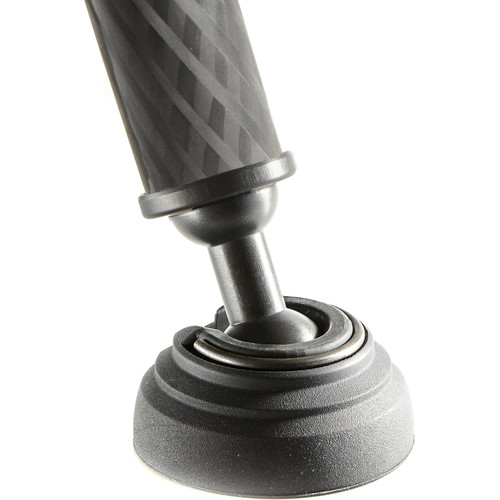
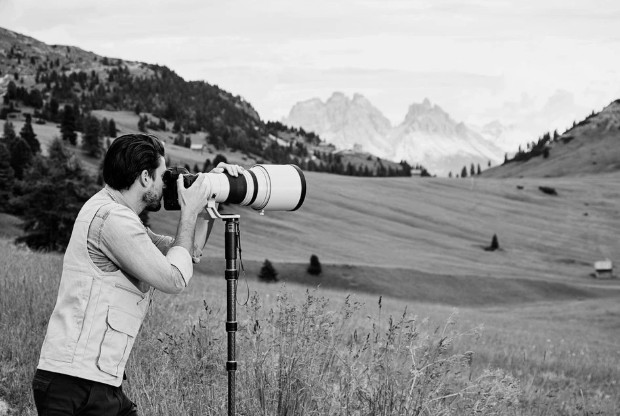
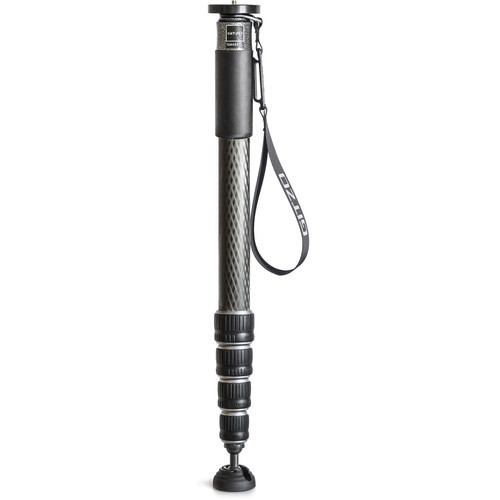
For wildlife photographers, the Gitzo GM4552L Monopod combines height, strength, and portability, making it a must-have for capturing stunning shots in the wild.
Manfrotto XPRO Aluminum Monopod
For wildlife photographers on the move, a solid monopod like the Manfrotto MPMXPROA4US XPRO Monopod+ can be a game-changer. Ideal for DSLR, mirrorless, and even video cameras, the MPMXPROA4US is a versatile aluminum support that excels in dynamic environments where speed and flexibility are key.
One of the standout features of the MPMXPROA4US is its lightweight design. Weighing just 1.65 lb (0.75 kg), it’s easy to carry on long treks through rough terrain. Despite its low weight, this monopod can support up to 44.1 lb (20 kg) of equipment, providing stability for heavy cameras and lenses. With a maximum height of 70.9″ (180 cm) and a minimum height of 22″ (56 cm), this monopod adapts to photographers of all sizes and can be adjusted for a wide range of shooting situations, from towering landscapes to low-angle shots of wildlife.
The 4-section leg design of the monopod, coupled with its aluminum construction, ensures that it’s both compact and durable, perfect for the rugged conditions wildlife photographers often encounter. As you move between different environments—whether on a safari or in a dense forest—the monopod’s quick-locking Power-Lock flip locks provide fast, secure adjustments, while the D-shaped leg sections prevent twisting, further enhancing stability.
Moreover, the rubber leg warmer offers a secure grip, even in wet conditions, and the adjustable hand strap gives added security during fieldwork, ensuring your gear stays safe when moving quickly between shots.
The monopod’s 1/4″-20 and 3/8″-16 mounting threads make it compatible with a variety of cameras, lenses, and tripod heads. Whether you prefer a direct camera mount for a quick setup or a more complex articulating head for precision adjustments, this monopod has you covered.
Key Features:
- Quick Power Lock (QPL): Enables rapid and secure setup, ensuring stability during use.
- D-Shaped Leg Sections: Prevents unwanted twisting, enhancing rigidity and smooth operation.
- Rubber Leg Warmer: Provides a comfortable grip, especially beneficial in colder conditions.
- Dual 1/4″-20 and 3/8″-16 Mounting Threads: Offers versatility in attaching cameras or heads.
Specifications:
- Load Capacity: 44.1 lb (20 kg)
- Maximum Working Height: 70.9″ (180 cm)
- Closed Length: 22″ (56 cm)
- Weight: 1.65 lb (0.75 kg)
- Leg Lock: Flip Lock
- Leg Sections: 4
- Head Mount Type: 1/4″-20 or 3/8″-16 Male
- Primary Material: Aluminum
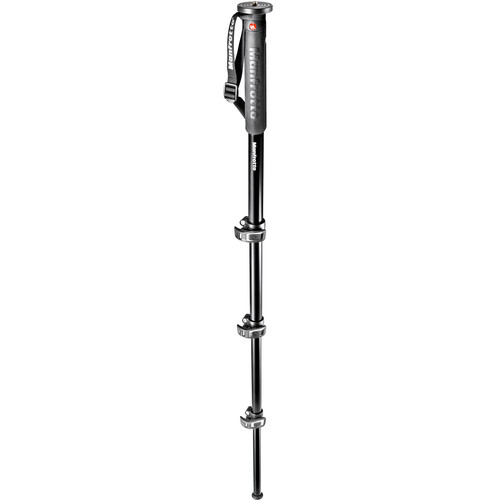
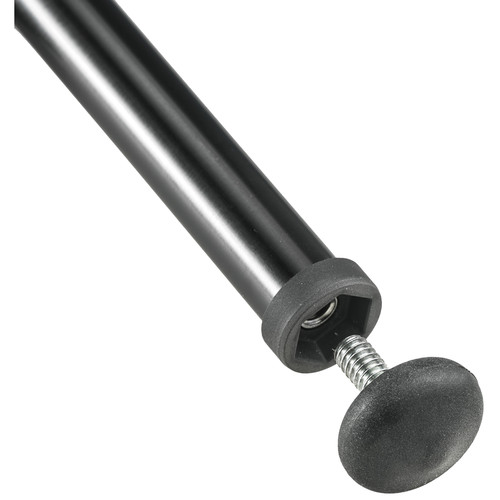
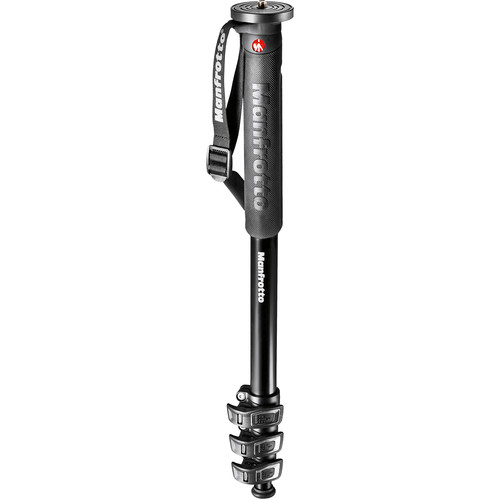
Whether you’re photographing fast-moving wildlife or setting up for a shot in a challenging environment, the Manfrotto MPMXPROA4US XPRO Monopod+ offers the perfect balance of portability, durability, and versatility for any wildlife photographer looking to take their gear into the wild.
Sirui P-326 Carbon Fiber Monopod
The Sirui P-326 Carbon Fiber Monopod is an ultra-lightweight support designed for wildlife photographers on the move. Weighing only 0.9 lbs, it’s ideal for handheld operation with DSLR, point-and-shoot cameras, or compact camcorders.
Crafted from 8x carbon fiber, the six-section P-326 collapses to just 15.6 inches, making it a compact, travel-friendly companion. It’s ready to set up in seconds and can support up to 22 lbs, offering reliable performance in the field. With its twist locks, the monopod extends to a comfortable 61.4 inches, ideal for wildlife photographers seeking an elevated vantage point.
For added comfort, the foam grip offers a secure hold, even in cold weather, while the wrist strap provides extra security. The reversible 1/4″-20 and 3/8″-16 screw mount ensures compatibility with almost any camera or camcorder. This monopod is perfect for capturing those fleeting wildlife moments with stability and ease.
Key Features:
- Carbon Fiber Construction: Lightweight and durable for wildlife photography in various environments
- Twist Locks: Secure and fast leg-stage extension for easy setup
- Foam Grip & Wrist Strap: Comfortable, secure handling even in cold conditions
- Compact Design: Folds to 15.6″ for easy transport and storage
Specifications:
- Head Mount Type: 1/4″-20 or 3/8″-16 Male
- Material: Carbon Fiber
- Load Capacity: 22 lb / 10 kg
- Maximum Height: 61.4″ / 156 cm
- Closed Length: 15.6″ / 39.5 cm
- Weight: 0.9 lb / 0.4 kg
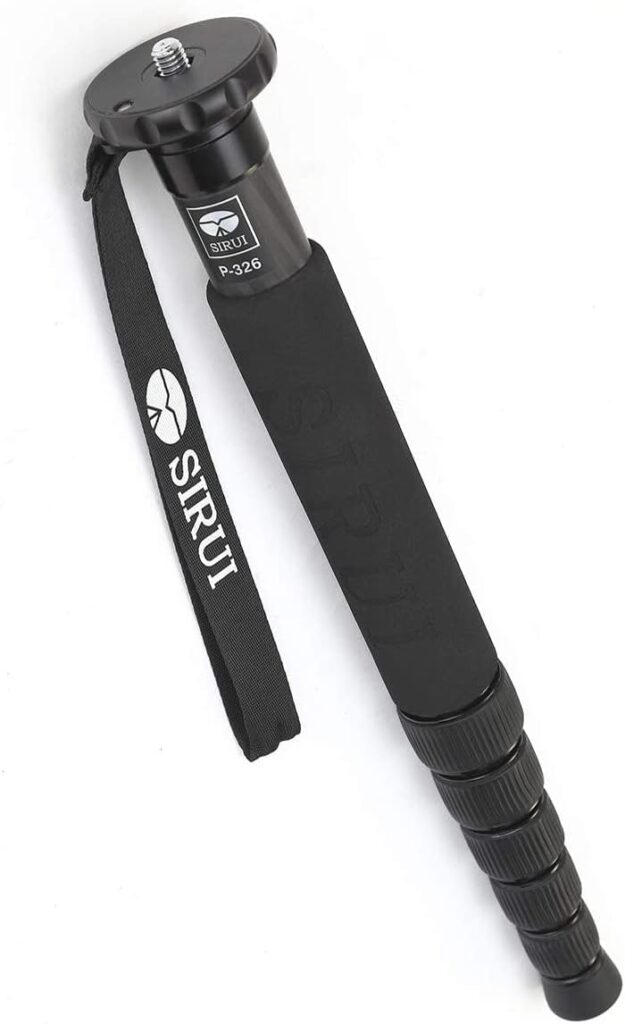
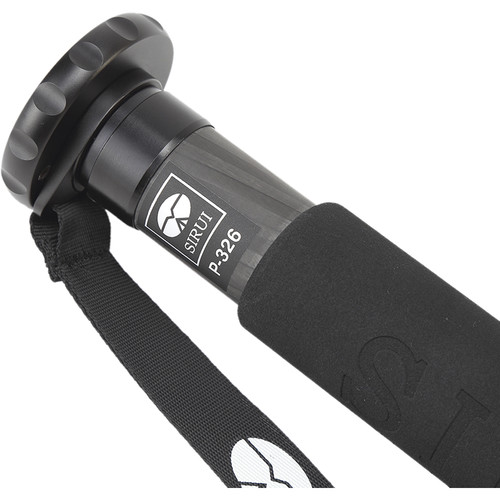
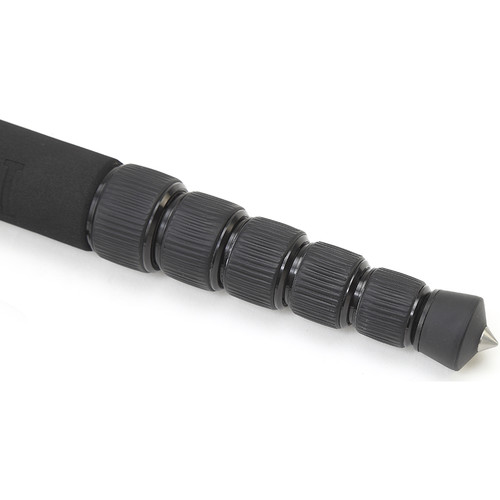
With the Sirui P-326, wildlife photographers can quickly adapt to any shooting scenario while maintaining stability and convenience on the go.
Clamp Anywhere Flexible Pods, & Mini Tripods
Camera support systems for wildlife photography also include clamp-anywhere flexible pods and mini tripods. These are perfect for vehicles or situations where you need to secure your camera to railings, bars, or other surfaces. Compact and highly adaptable, they’re game-changers when a full-sized tripod isn’t practical.
Best Picks
Joby Gorillapod SLR-Zoom
The Joby Gorillapod SLR-Zoom is a rugged, ultra-flexible mini-tripod built for larger DSLR cameras and camcorders (up to 6.6 lb/3 kg). Its three segmented legs bend and rotate 360°, gripping branches, rocks, railings – almost anything you find in the wild and is a great camera support systems for wildlife photography .
Rubberized foot grips add extra stability when used traditionally on the ground. It also includes a 3/8″ thread adapter, ready for your favorite tripod head.
- Load Capacity: 6.6 lb / 3 kg
- Minimum Height: 2″ / 50 mm
- Weight: 0.77 lb
- Dimensions: 12.75 x 3.85 x 3.2″
Lightweight, tough, and endlessly adaptable, the Gorillapod SLR-Zoom is a must for wildlife photographers who go off the beaten path. The 360-degree panning feature allows you to easily maneuver your camera, helping you explore creative angles. Whether shooting from low angles or high up on uneven ground, the GorillaPod provides precise positioning, making it a perfect camera support system for wildlife photographers looking to expand their range of shots.
Setting up the GorillaPod SLR-Zoom is quick and simple. Its quick-release plate allows for easy attachment and removal of your camera. Whether you’re swapping gear or moving locations, you can rely on the 1/4″-20 tripod mount and 3/8″ adapter for a secure fit.
Built to Last
Constructed from durable Japanese ABS plastic, stainless steel, and German TPE, the GorillaPod is tough enough to withstand the demands of both everyday use and rugged adventures. It’s the perfect companion for wildlife photographers in the field.
The Joby GorillaPod SLR-Zoom brings flexibility and durability, making it an essential tool for wildlife photographers who need reliable support in challenging environments.
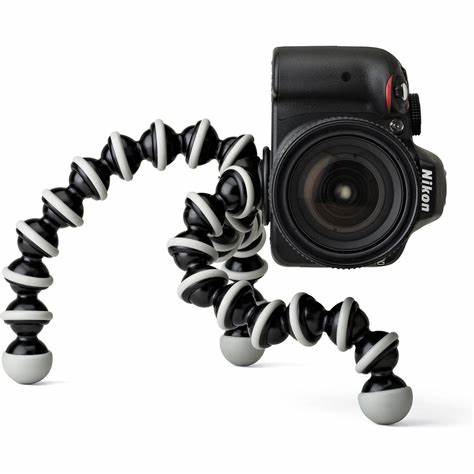
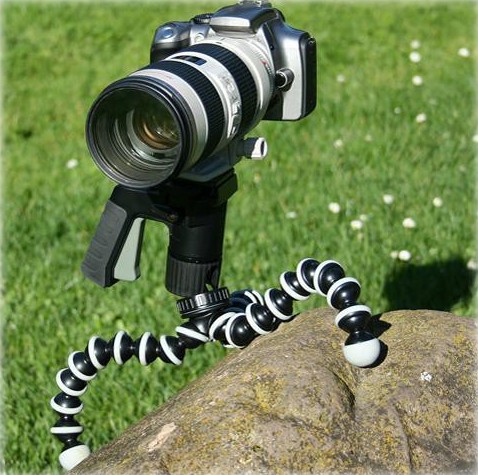
SmallRig VT-20 Aluminum Mini Tripod with Ballhead – Perfect for Wildlife Photographers on the Move
If you love lightweight gear, the SmallRig VT-20 Mini Tripod is a fantastic choice for your wildlife adventures.
Thanks to its five-section aluminum legs, this tripod extends up to 20.5 inches while remaining incredibly sturdy.
Moreover, it supports up to 13.2 pounds, making it perfect for DSLR cameras, mirrorless setups, and even spotting scopes.
When your shoot is done, simply fold it down to a compact 7.1 inches.
Weighing just 1.54 pounds, it’s easy to slip into your backpack without feeling weighed down.
For extra height, the extendable center column comes in handy.
Even better, the included ballast hook allows you to add weight for improved stability during windy conditions.
In addition, the reverse-folding legs make setup and takedown fast and efficient in the field.
You can also adjust the legs independently with three angle options — 23°, 50°, or 80° — for tricky terrain.
The Arca-type ball head offers smooth adjustments and includes a quick-release plate for fast camera mounting.
Need extra gear? A 1/4″-20 female thread is available to attach accessories like a magic arm.
Key Features at a Glance:
- Load Capacity: 13.2 lb (6 kg)
- Maximum Height: 20.5″ (52 cm)
- Minimum Height: 6.7″ (17 cm)
- Closed Length: 7.1″ (18 cm)
- Tripod Weight: 1.54 lb (699 g)
- Material: Durable aluminum alloy
- Head Type: Ball head with 90° tilt and independent locks
Whether you’re tracking birds, photographing small mammals, or setting up macro shots in tight spaces, the VT-20 delivers. Due to its lightweight and versatile design, it is a great tool for dedicated wildlife photographers to include in their kit.
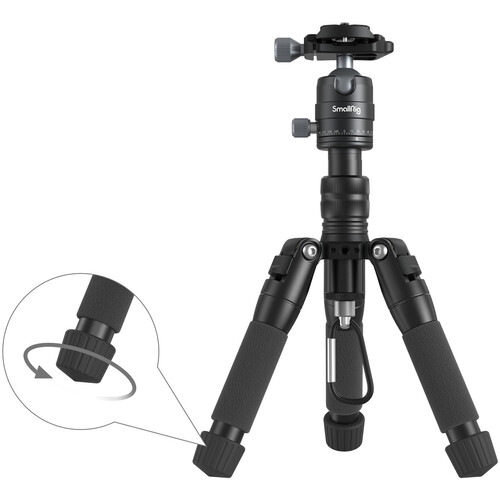
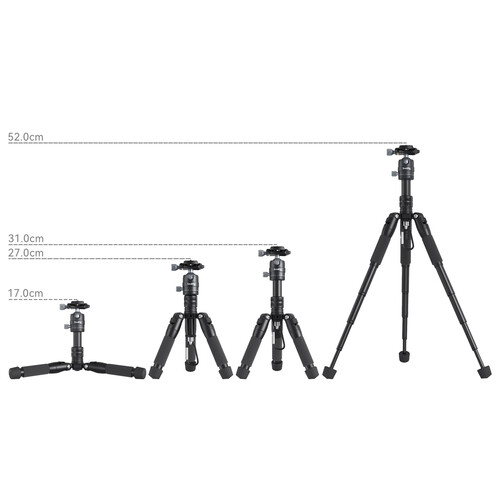
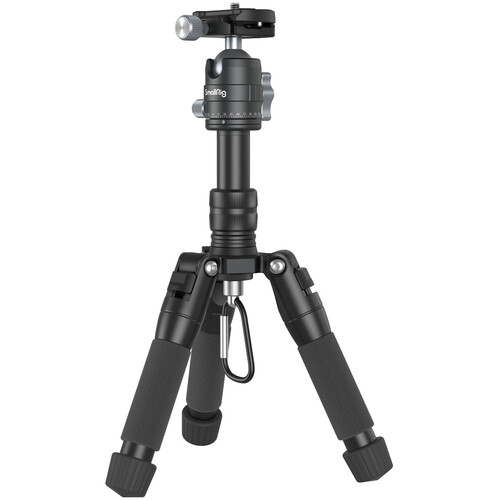
Really Right Stuff TVC-32G Versa Series 3 Mk2 Ground Carbon Fiber Tripod – Built for Low-Angle Wildlife Shots
If you need ultimate stability for ground-level wildlife shots, the Really Right Stuff TVC-32G is an outstanding choice. Made from patented carbon fiber weave, it weighs just 2.5 pounds but can safely support a huge 50 pounds. Even better, it extends up to 13.8 inches and folds down to only 10.1 inches, perfect for easy packing and travel.
The two-section legs allow fast height adjustments, while the twist locks need just a quick quarter turn to secure. Additionally, the offset leg joints help distribute heavy loads evenly, keeping your setup steady even on uneven ground. Each leg features a ratcheting angle stop, making it easy to lock legs quickly into position while staying focused on the action.
Its teardrop-shaped rubber feet provide a solid grip on any surface and prevent the legs from scraping the ground. If needed, you can also swap the rubber feet for metal all-terrain spikes (sold separately) for rough outdoor conditions.
The Versa apex design supports a 75mm video bowl and offers multiple 1/4″-20 accessory sockets for extra gear. Lightweight yet extremely strong, this tripod is built for wildlife photographers who demand the best at ground level.
Key Features at a Glance:
- Load Capacity: 50 lb (22.68 kg)
- Maximum Height: 13.8″ (35.1 cm)
- Minimum Height: 2.9″ (7.4 cm)
- Closed Length: 10.1″ (25.65 cm)
- Tripod Weight: 2.5 lb (1.13 kg)
- Materials: Carbon fiber and aluminum alloy
- Leg Lock Type: Twist lock with particle protection
- Feet: Rubber with optional all-terrain spikes available
Whether you’re shooting nesting birds or crawling critters, the TVC-32G delivers precision and portability like few others can.
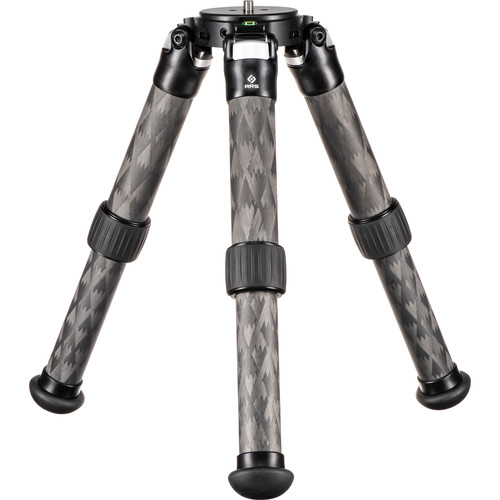
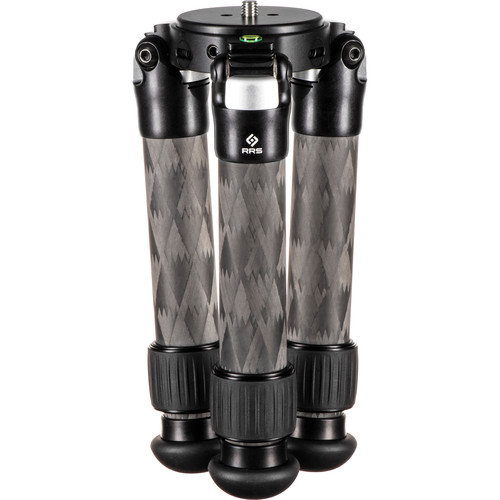
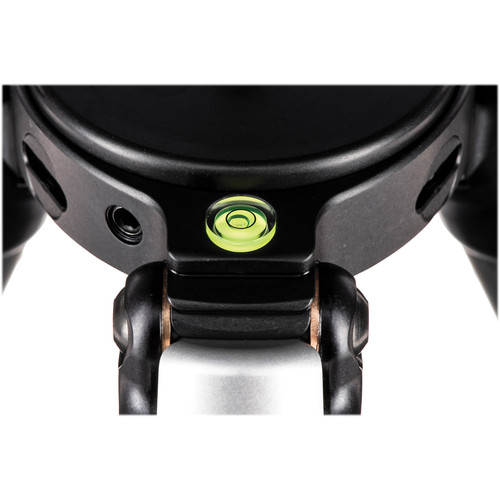
Ground Plates: Low and Steady Wins the Shot
Ground plates are the go-to for macro and low-angle wildlife photography. Think of photographing frogs, lizards, or insects – your camera practically hugging the ground.
When to Use:
- For low-to-the-ground wildlife
- Macro work in forests or wetlands
- Where stealth is key
Recommended Ground Plates
Kirk Low Pod Camera Support – Perfect for Ground-Level Wildlife and Macro Photography
When you need to shoot low to the ground, the Kirk Low Pod Camera Support delivers incredible stability and flexibility. Built for low-angle wildlife photography and macro work, this sturdy platform keeps your camera steady in any rugged environment. Thanks to its built-in handle, you can easily pick it up and reposition it without wasting valuable shooting time.
Moreover, the Low Pod is compatible with any tripod head featuring a 3/8″-16 mount, making it highly versatile. Its solid aluminum construction and powder-coated finish ensure durability even in harsh outdoor conditions. Plus, four strong rubber feet prevent slipping on rocks, dirt, or uneven surfaces during field shoots.
Lightweight yet rugged, this support system is ideal for wildlife photographers who demand portability and strength at ground level.
Key Features at a Glance:
- Mount Type: 3/8″-16 male screw
- Material: Aluminum, powder-coated for durability
- Color: Black
- Built-in Carry Handle: Yes
- Rubber Feet: Four for extra grip
- Best For: Wildlife, low-angle, and macro photography
- Weight: 2.7 lb
Whether you’re photographing tiny insects or low-perching birds, the Kirk Low Pod makes ground-level photography easier and more reliable.
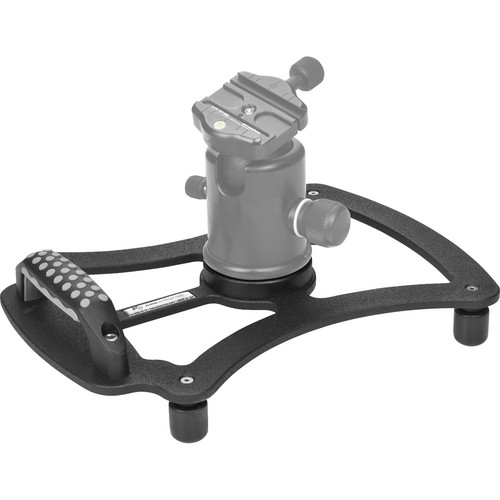
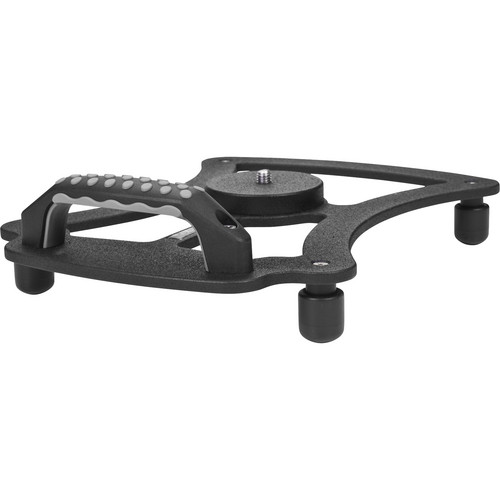
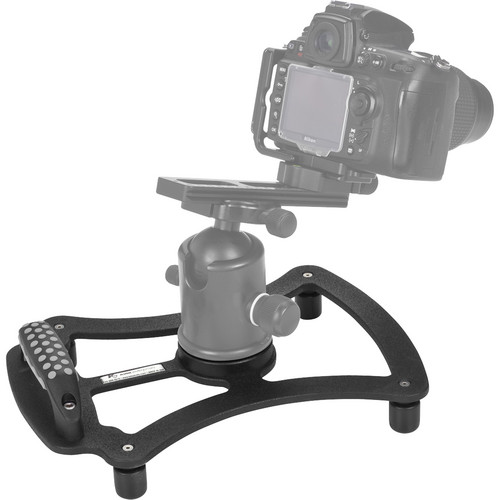
Naturescapes Skimmer Ground Pod II – Glide Effortlessly for Ground-Level Wildlife Photography
If you love capturing wildlife at eye level, the Naturescapes Skimmer Ground Pod II is a must-have. Its 10-inch round design lets you slide your camera across mud, sand, or grass—without scooping up dirt or water. Moreover, your camera gear stays clean and dry even in up to 1.5 inches of standing water.
Thanks to its flat bottom, the Skimmer glides smoothly while protecting your equipment from moisture, mud, and debris. In addition, the sides curve outward, helping push away sand and dirt as you move across challenging terrain.
Inside the pod, a protected storage area provides quick access to small gear like teleconverters and extension tubes. The 3/8″-16 mount easily fits most ball heads or gimbal heads, including the popular Wimberley Gimbal Head II. Even better, no riser block is needed for low-profile lens feet, though an optional riser is available for extra height.
Constructed of super heavy-duty, crush-proof plastic, the Skimmer withstands extreme heat, cold, and rugged use. A reinforced lanyard attachment ensures you can securely tether the pod for even more peace of mind.
Key Features at a Glance:
- Diameter: 10 inches
- Height: 1.5 inches
- Mount Type: 3/8″-16 male screw
- Material: Crush-proof injection-molded plastic
- Weight: 15 oz
- Compatible With: Ballheads, gimbal heads, and low-profile lens feet
- Great For: Wildlife, bird, and ground-level photography
Glide through tough environments and stay focused on getting the perfect low-angle wildlife shot with the Skimmer Ground Pod II.
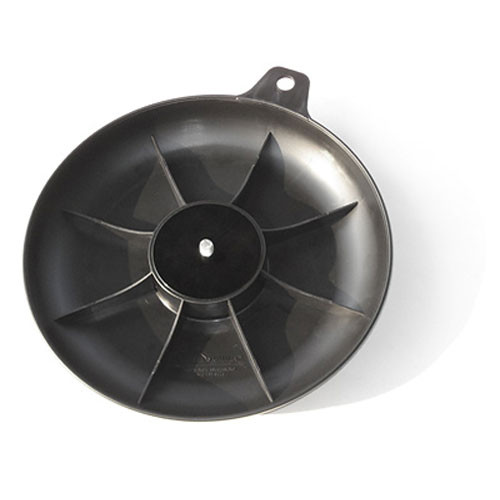
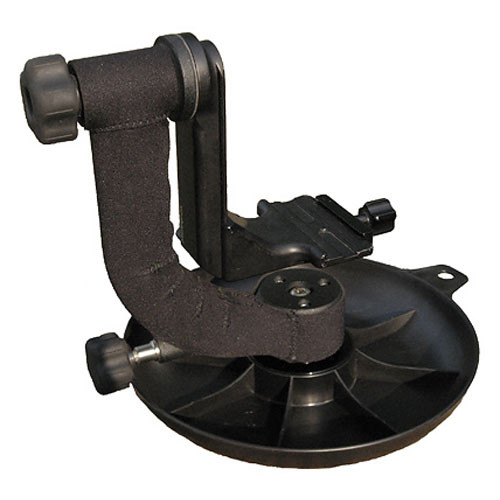
Bean Bags: Versatile and Travel-Ready
When it comes to photographing wildlife, conditions are rarely perfect. You may find yourself shooting from a rocky ledge, the hood of a car, or crouched in dense brush. That’s where bean bags shine.
These flexible camera supports conform to almost any surface, flat or uneven offering instant stability without the bulk of a tripod. Whether you’re setting up on a boulder, a car window, or even the forest floor, they help you get the shot without wobble or camera shake.
Lightweight and easy to pack, bean bags are perfect for wildlife photographers who need to stay mobile. Unlike heavy tripods or monopods, a good bean bag tucks easily into a backpack, adding minimal weight but maximum versatility.
Additionally, models like the Focus Ratbag come with mounting loops for rigging to vehicles, while the Cinesaddle includes a strap system for securing your setup on the move, ideal for dynamic wildlife shots where fast repositioning is key.
Their durable, weather-resistant materials mean they can handle the rugged conditions wildlife photographers often face from rain-soaked fields to dusty trails. Plus, their low-profile design helps you stay unobtrusive, blending into your surroundings without spooking your subject.
Top Bean Bags
FOCUS RAT Professional Rat Bag V4: Ultra-Stable, Ultra-Tough Camera Support
Designed for professional cinematographers, videographers, and wildlife photographers, the FOCUS RAT Professional Rat Bag V4 offers rugged stabilization without the noise or bulk of tripods and gimbals. Built with a durable, water-resistant Cordura nylon exterior and filled with silent memory foam, this bag delivers smooth, shake-free footage even in extreme outdoor environments.
Its camouflage design blends seamlessly into natural surroundings, making it an excellent choice for wildlife photographers who need to stay hidden while capturing animals in their natural habitat. Supporting rigs up to 22 pounds, the Rat Bag V4 excels at creating stable setups on uneven surfaces like car hoods, window ledges, and rocky terrain. A nonslip rubber underside keeps your gear secure, while four car-mounting loops open up dynamic shooting possibilities. You can even customize the foam density through a zippered access point for fine-tuned support.
Comfort isn’t forgotten either: the Rat Bag includes a removable, Air Compress shoulder strap for easier carrying on long shoot days, plus a compact pouch for easy transport. A reversible camera cover adds extra protection against weather and heat, making this a true go-anywhere stabilization solution.
Key Features:
- Noise-absorbing memory foam for smooth, stable shots
- Durable, water-resistant Cordura nylon exterior
- Camouflage pattern to blend into natural environments
- Available in other colors
- Nonslip rubber underside for security on any surface
- Four mounting loops for rigging to vehicles or other supports
- Removable padded strap for comfort
- Reversible weather-resistant camera cover
- Weighs just 2.2 lb for easy portability
The FOCUS RAT Bag V4 is the ultimate lightweight stabilization tool for adventurous photographers who need to stay stable – and stay hidden – in the wild.
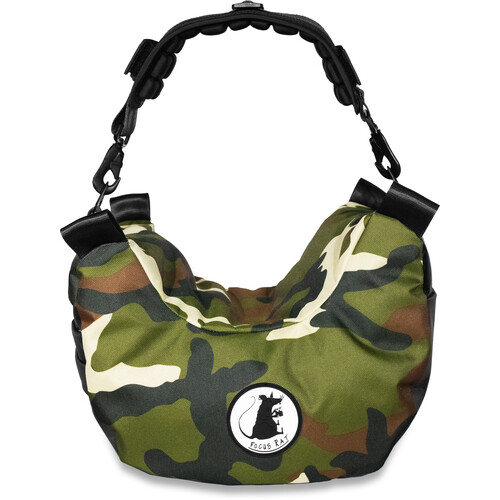
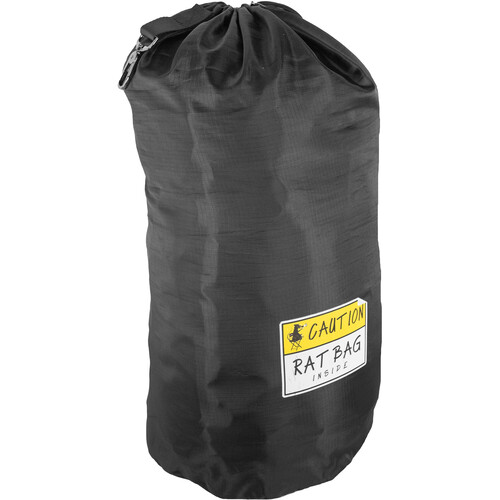
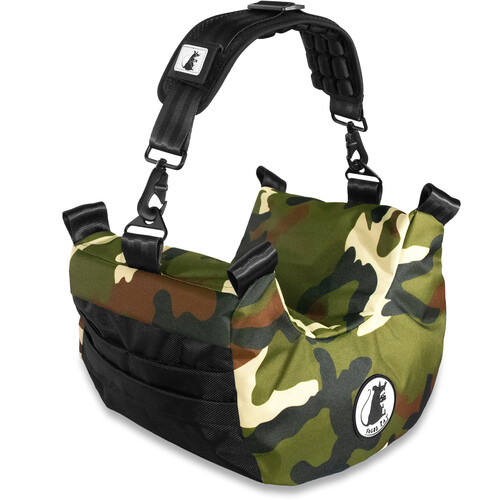
Cinesaddle Marsupial Series 2: Flexible Camera Support for the Wild
When a tripod isn’t practical, the Cinesaddle Marsupial Series 2 offers flexible, reliable camera support almost anywhere.
Made from durable, waterproof canvas with industrial-strength stitching, it easily supports DSLR, mirrorless, and compact cine cameras.
Because of its soft design, it cradles your camera securely while adapting to flat or uneven surfaces with ease.
Additionally, the included Komfy Strap cushions your neck and shoulder, making long shoots much more comfortable.
Meanwhile, the Marsupial model features an internal storage pouch for small cameras or essential accessories.
You’ll also find three open pockets, perfect for keeping batteries, lens caps, or cleaning cloths handy.
Moreover, the included Mounting Kit allows you to secure your camera to cars, boats, or even bikes.
Stirrups and anchors are thoughtfully designed to attach to a car hood or the inside of a door.
Thus, you can capture stable footage, even while on the move, without setting up a full tripod system.
Key Specs:
- Material: Durable fabric
- Dimensions: 14 x 12 x 12″ (35.6 x 30.5 x 30.5 cm)
- Weight: 2.76 lb (1.25 kg)
- Includes: Cinesaddle, Mounting Kit, Komfy Strap, 1-Year Warranty
Whether you’re shooting from rocky cliffs or the hood of a jeep, the Cinesaddle keeps your camera steady and ready.
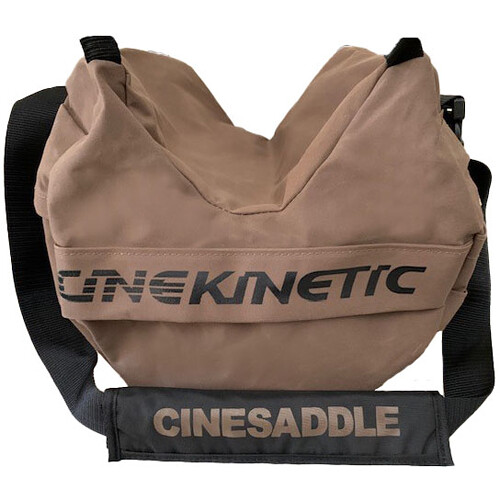
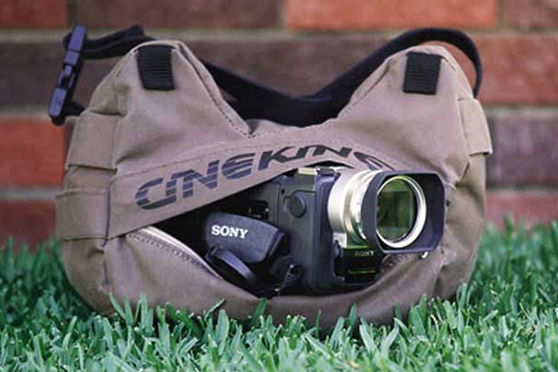
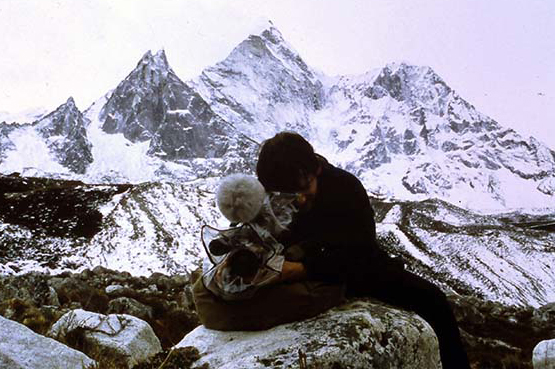
Bean bags are ideal for self-drive outings where exiting the vehicle is unsafe or disruptive to wildlife. They also double as ground rests in open areas.
DIY Tip:
Use a pool noodle over your window for a quick and cushioned rest.
- Hooks over vehicle doors, perfect for national park outings, wildlife drives and off-road adventures.
- U-shaped support for window rests and door frames.
Camera Bags and Backpacks: Instant Low-Level Support
When you’re traveling light, a padded camera bag or backpack can double as a support tool – especially for spontaneous low-angle shots. We will dive into camera bags and backpacks in a future blog.
Recommended Remotes by Brand
When every ounce of stability counts, a reliable remote shutter release can make all the difference. Whether you’re shooting at 600mm or working in low light, eliminating camera shake is key. Here are some top picks by brand to keep your shots tack-sharp- no matter what you’re chasing.
Canon
- Canon BR-E1 Wireless Remote – Compact and reliable for Bluetooth-enabled Canon cameras.
- Canon RS-60E3 Wired Remote – A basic, dependable wired shutter release.
Sony
- Sony RMT-P1BT Wireless Remote Commander – Fast Bluetooth connection with silent shutter release.
- Sony RM-VPR1 Wired Remote – Works with multi-terminal cameras; includes zoom control for compatible lenses.
Nikon
- Nikon ML-L7 Bluetooth Remote – Pairs with select mirrorless cameras (Z series).
- Nikon MC-DC2 Wired Remote – Classic and reliable for DSLRs and many mirrorless bodies.
Universal Options
- Pixel TW-283 Wireless Timer Remote – Multi-brand compatible (choose correct version for your camera).
- Vello FreeWave Plus Wireless Shutter Release – Affordable and reliable; models for most major brands.
Be sure to match the model to your camera body, as many of these remotes are brand-specific or require a compatible port or Bluetooth pairing.
Pair your remote shutter release with a tripod, monopod, bean bag, or ground pod setup to keep things stable and sharp – especially for long-exposure shots or telephoto wildlife captures.
Harness and Sling Supports: Stay Ready, Stay Comfortable
If your adventure includes long walks, a harness or sling can make a big difference. These support systems reduce fatigue and keep your camera ready at a moment’s notice – perfect for wildlife photographers who need quick-draw access without sacrificing comfort.
While we’ll dive deeper into harness and sling systems in a future blog post, here’s a quick overview to get you started:
Consider These Options:
- Joby UltraFit Sling Strap – Designed for speed and comfort, this sling stays close to your body but moves easily into shooting position.
- Spider Camera Holster SpiderPro Hand Strap V2 (Black) – offers a secure, ergonomic grip for your camera, combining comfort and quick access for fast-action wildlife shots.
- Cotton Carrier G3 Harness – This rugged harness distributes the camera’s weight evenly across your torso, keeping your hands free and your gear balanced.
Choosing the right strap or harness not only boosts your endurance on long treks but also helps you react quickly when wildlife suddenly appears. I personally rely on a hand strap and a Cotton Carrier, and both have proven to be essential tools whenever I’m out photographing wildlife.
Stay tuned for a full breakdown of the best harnesses, slings, and hybrid systems coming soon to Photo Wild Gear!
Final Thoughts: Build Your Ideal Support Kit
Choosing the right support system depends on your shooting style and environment. Here’s a quick summary:
| Gear Type | Best For | Bonus Benefit |
|---|---|---|
| Tripod | Long exposures, remote shooting, stability on uneven terrain | Rock-solid support for heavy gear |
| Monopod | Fast action, long hikes | Lightweight and nimble |
| Ground Plate | Macro and low-angle wildlife | Maximum stability close to ground |
| Camera Bag | Spontaneous ground shots | No extra gear needed |
| GorillaPod | Safari vehicles, tree branches | Clamp-anywhere flexibility |
| Bean Bag | Shooting from cars or on the ground | Travels empty, fills on arrival |
| Remote Shutter | Long lenses, stable shooting | No shake during shutter press |
| Harness/Sling | Walking safaris or long treks | Quick-draw and hands-free support |
Bonus: Water-Friendly Camera Supports
Wildlife photography doesn’t stop at the shoreline – so your support gear shouldn’t either. Whether you’re wading through wetlands, gliding across a lake, or crouched at the water’s edge, here are some smart tools to help you stay steady and dry:
Floating Camera Rests
Like the LensCoat® and LensSack Pro Jr Float, these keep your camera stable on calm water – perfect for kayak photography or low-angle shots near the shore.
Kayak or Canoe Mounts
Brands like RAM Mounts offers modular, heavy-duty mounting systems that are ideal for kayaks and canoes. The ball-and-socket design absorbs shock and allows flexible positioning, making them the go-to choice for wildlife photographers shooting from the water.
Chest or Shoulder Harnesses
Waterproof harnesses, such as the Cotton Carrier G3, let you wade safely with both hands free and your gear at the ready.
Waterproof Bean Bags
Built for use on wet surfaces or boat rails, these mounts offer flexible, low-angle support while safeguarding your gear. Options like the Naturescapes Skimmer Sack and Cinesaddle provide stability without sacrificing mobility.
GorillaPods or Mini Tripods
Gorilla Pods and/or Mini Tripods are great for tidepools or shallow water, just make sure they’re cleaned and dried thoroughly after use.
Wading Staff Monopods
Trekking pole hybrids like the Trek-Tech TrekPod double as monopods and walking aids—perfect for riverbeds and marshes.
Paddle Boards with Stabilizers
An excellent option for slow, stealthy approaches on still water. Low, silent, and super stable with a bit of balance. Because sometimes the best wildlife encounters happen when you’re knee-deep in the wild!
Stand-Up Paddleboarding (SUP) isn’t just for fitness lovers and calm lake days, it’s also becoming a quiet, eco-friendly way for photographers to access wildlife-rich waters. Paddle boards offer a unique, elevated vantage point, ideal for spotting birds, reptiles, and mammals along the shoreline or in shallow marshes.
Why Use a Paddle Board for Wildlife Photography?
- Silent movement: Glide quietly without a motor, reducing disturbance to wildlife.
- High perspective: Standing gives you better visibility above reeds, rocks, and shallow water vegetation.
- Access remote areas: Reach spots that kayaks or motorboats can’t get to, especially in shallow or tight environments.
- Great for golden hour: Easy to paddle into position for sunrise/sunset reflections and lighting.
- Because sometimes the best wildlife encounters happen when you’re knee-deep in the wild… or balanced just above it.
Stability Matters: SUPs with Outriggers or Stabilizers
While experienced paddlers may find a standard board stable enough, SUPs with stabilizer kits or outriggers offer extra confidence, especially when you’re managing gear.
Look for:
- Wide platform boards (32”+ width)
- SUP stabilizers like the SUP-Now Outrigger Kit or YakGear SUP Stabilizers
- Inflatable paddle boards (iSUPs) rated for stability — easier to pack and softer under your gear if you fall
Protecting Your Camera on the Water
Wildlife photography and water don’t always mix – so here’s how to keep your gear safe:
| Gear | Purpose |
|---|---|
| Dry bag or roll-top camera bag | Keep camera gear dry and protected from splashes |
| Pelican case or hard waterproof box | Best for DSLR/mirrorless if not actively shooting |
| Floating camera strap | A must-have for handheld shots on water |
| Silica gel packs | Store with your gear to absorb moisture |
| Clip-on towel or microfiber cloth | To wipe off fog, water, or smudges quickly |
Pro Tip: Only take one camera and one lens on the board at a time – ideally something weather-sealed and versatile, like a 100–400mm or 70–200mm.
Skills & Safety
This IS NOT beginner territory. A SUP adventure shoot requires:
- Comfortable paddling ability – including kneeling, standing, and balancing in small chop
- Knowing how to fall safely – and keeping gear secured if you do
- Wearing a PFD (personal floatation device) – ideally with gear pockets
- Letting someone know your route and return time
- Avoiding strong currents, high wind, or busy boat traffic zones
Best Conditions for SUP Wildlife Photography
- Early mornings or evenings (less wind, more wildlife)
- Calm freshwater lakes, marshes, and slow rivers
- Wildlife-rich zones where boats aren’t allowed but paddleboards are
Up Next on Photo Wild Gear: Choosing the Right Tripod Head for Wildlife Photography
Whether you’re tracking birds in flight or framing the perfect low-angle shot of a fox in the mist, your tripod head is where control meets creativity.
In our next post, we’ll break down the different types of tripod heads – including gimbal heads, ball heads, and fluid heads – and help you find the perfect match for your shooting style. Plus, we’ll share top product picks for Nikon, Sony, OM, and Canon wildlife photographers.
Stay tuned – steady shots and sharper images are just ahead!




